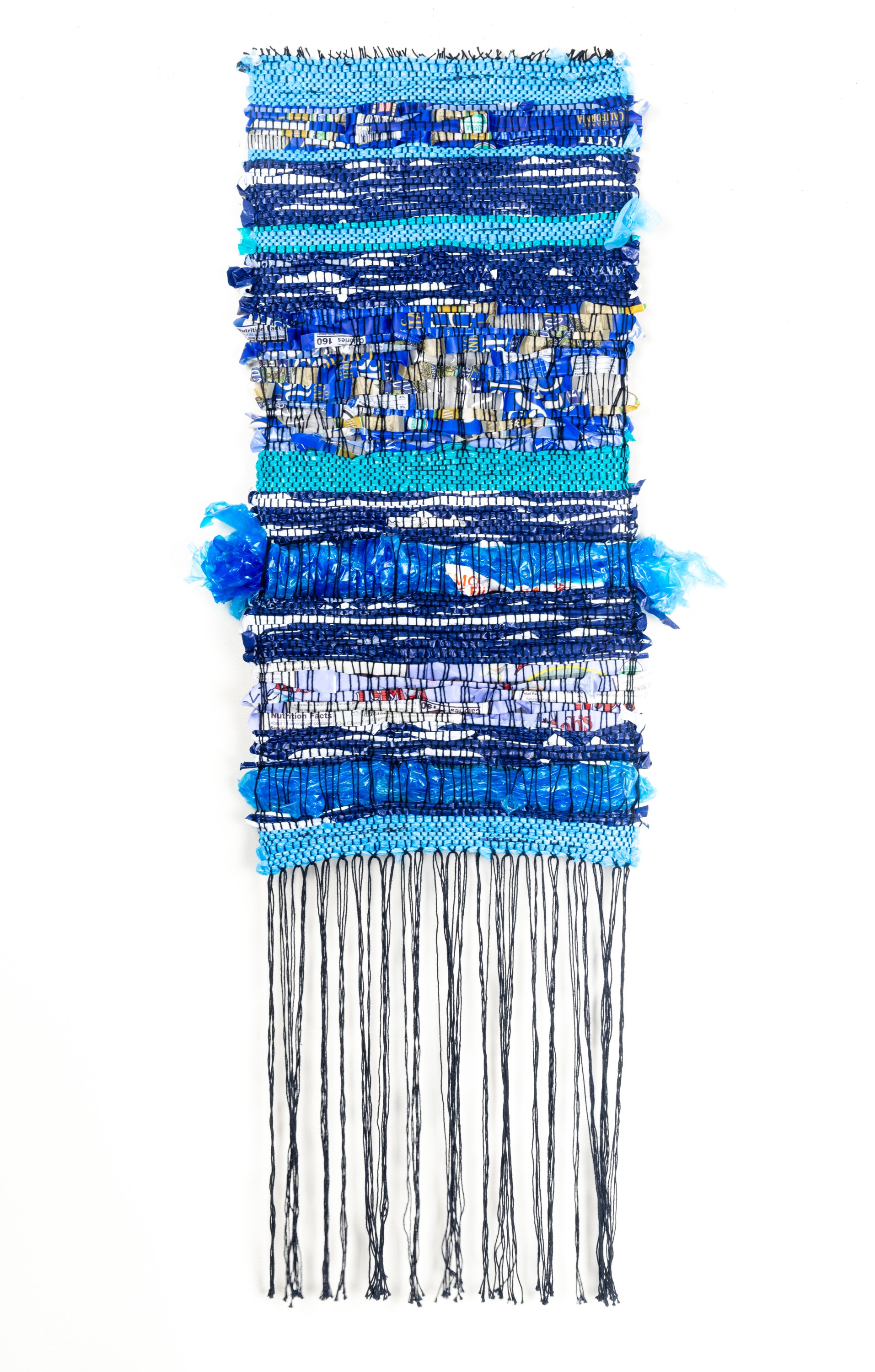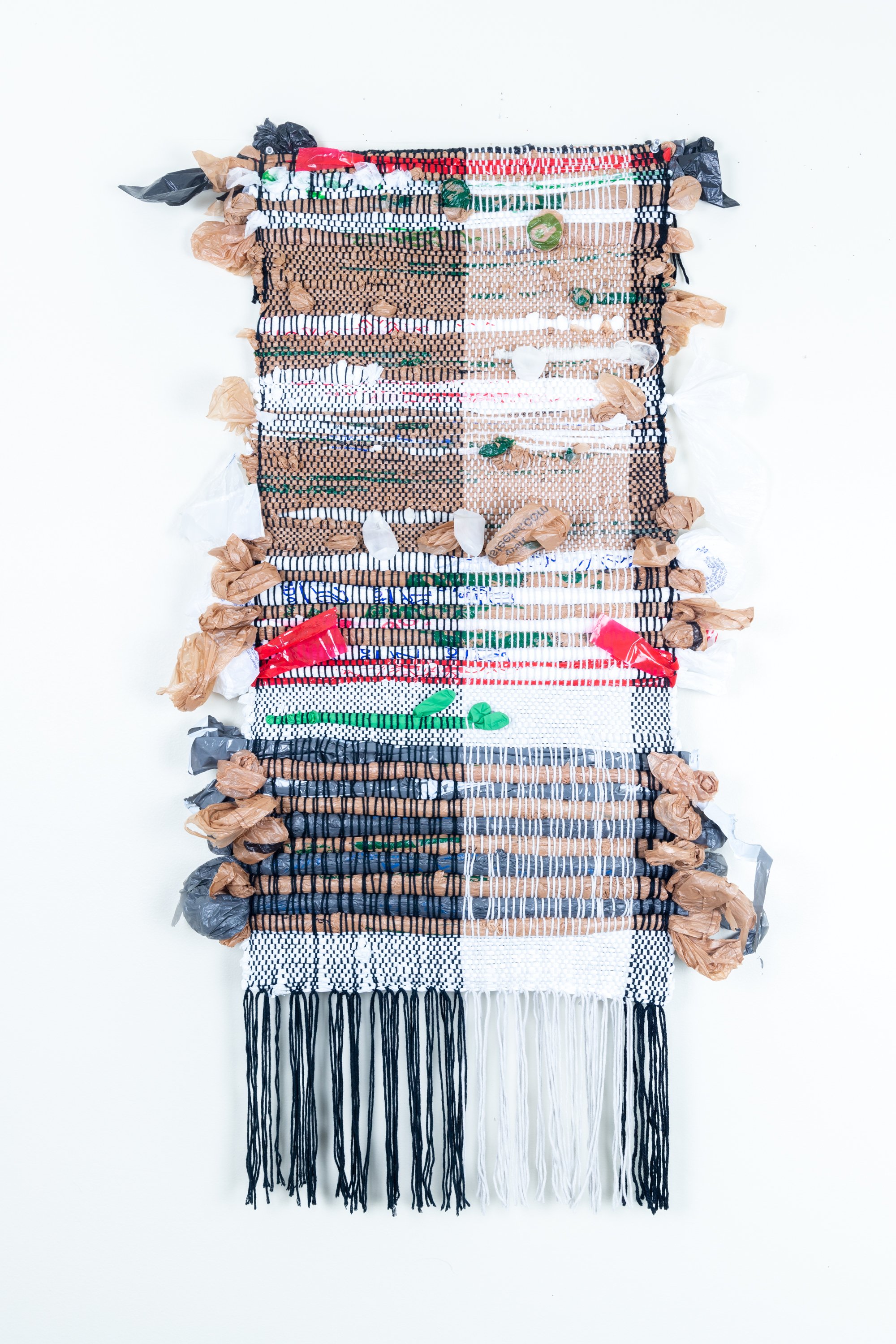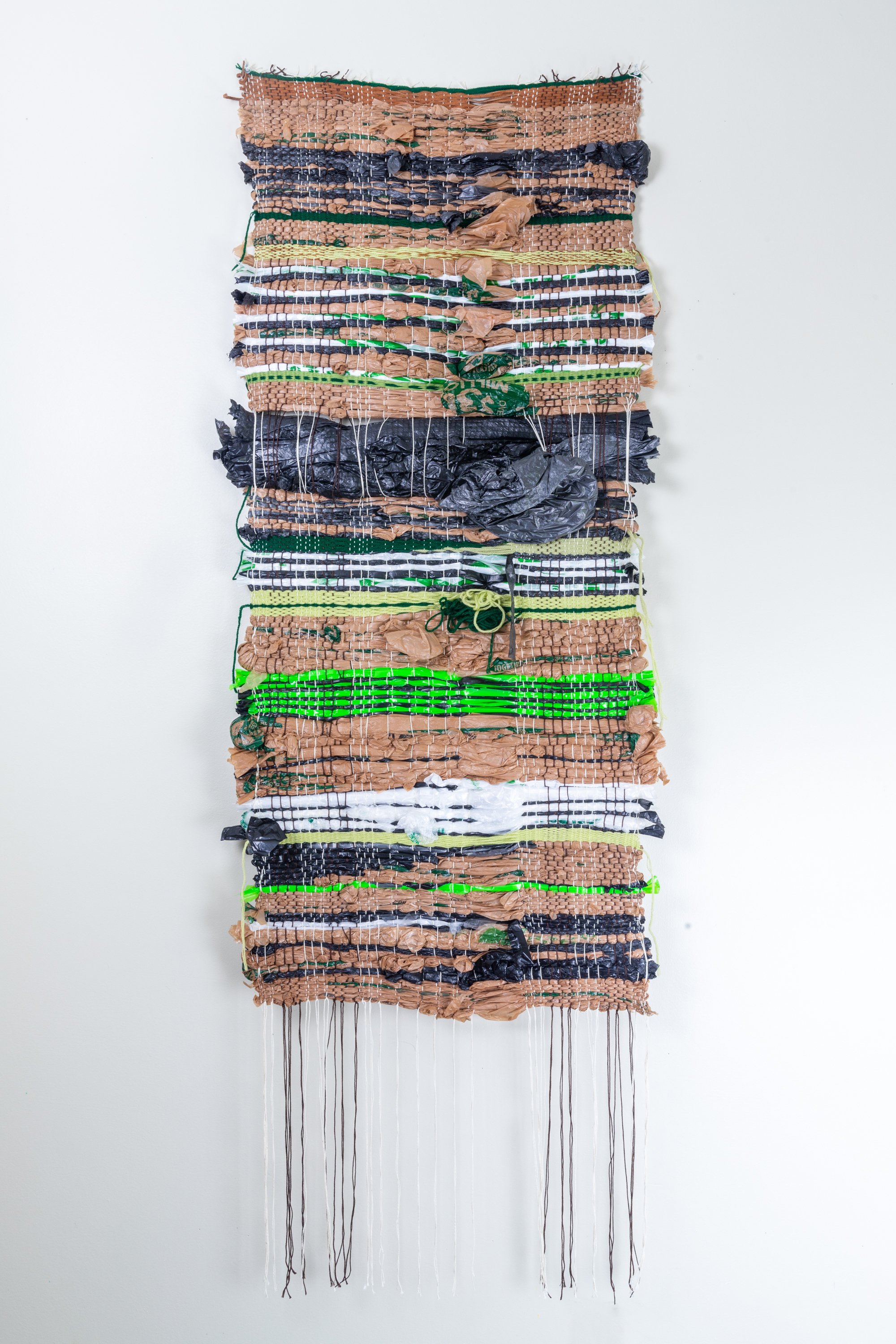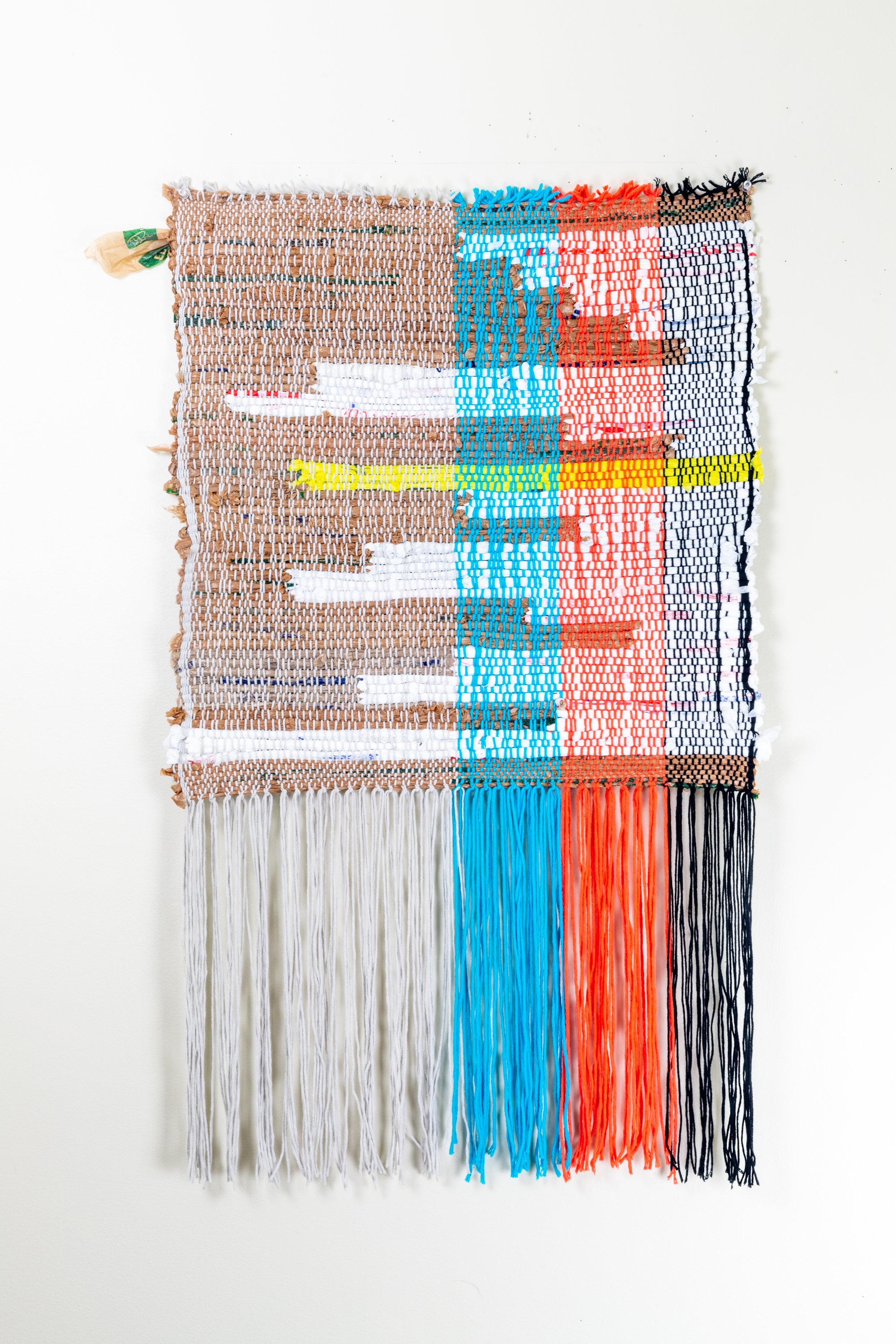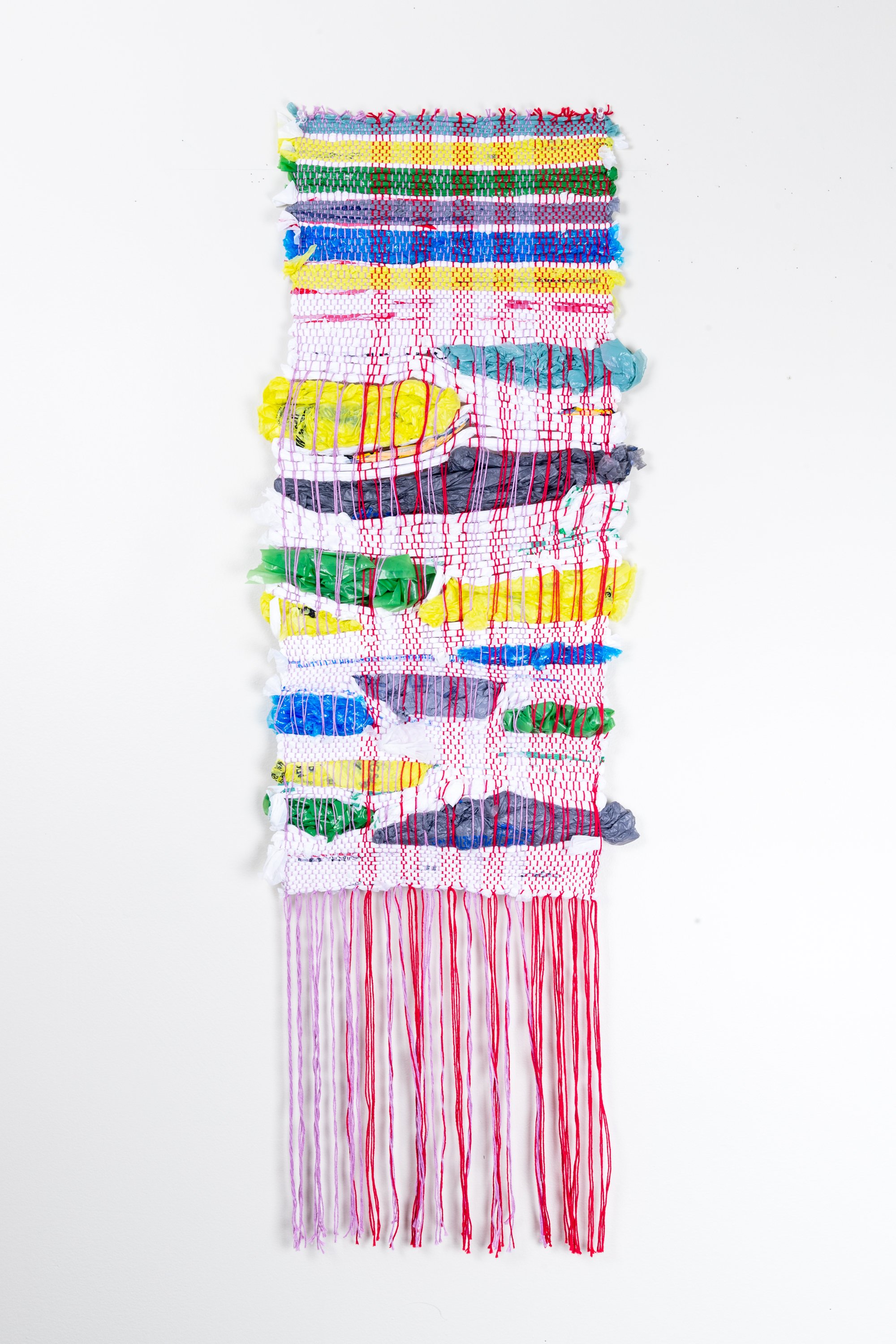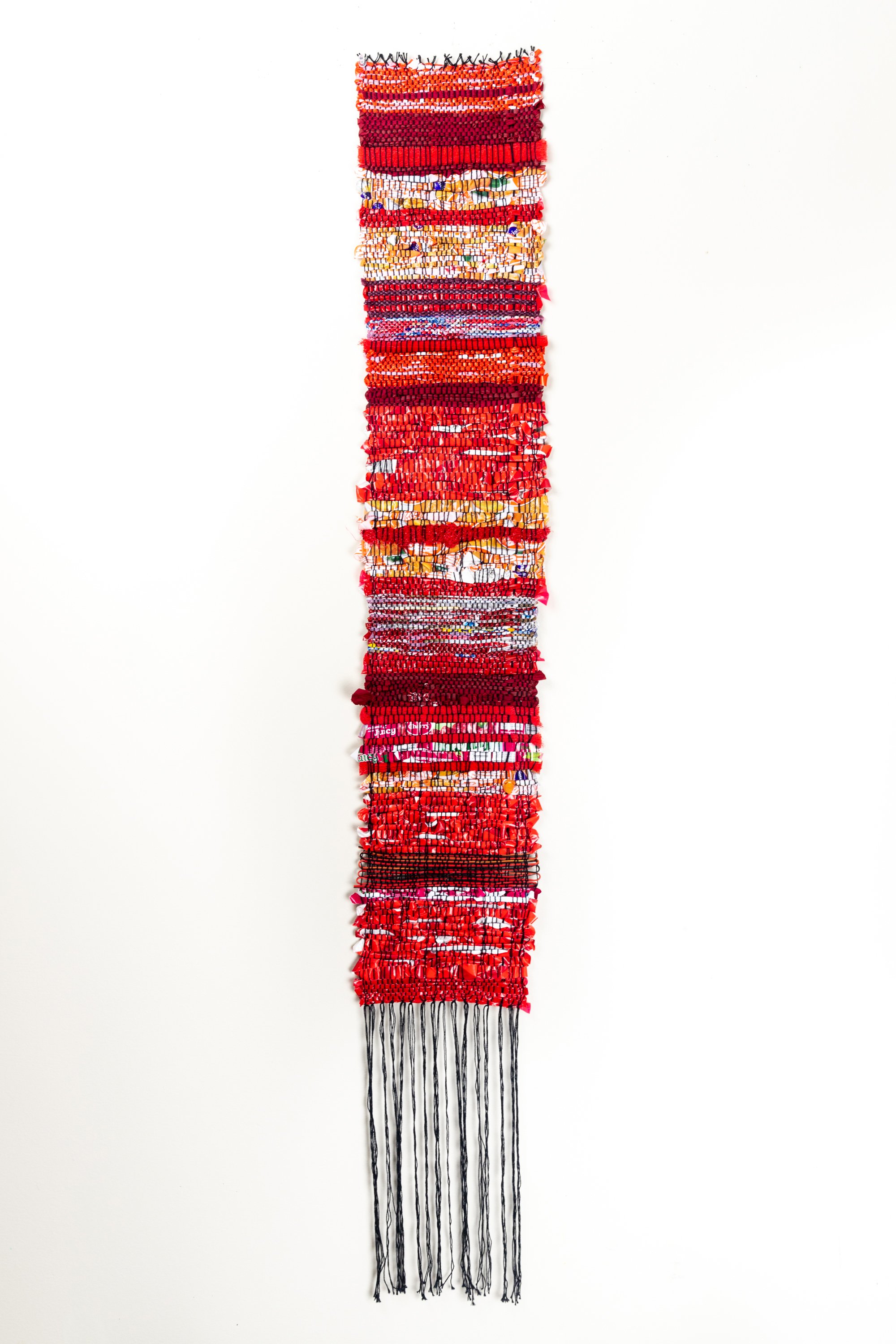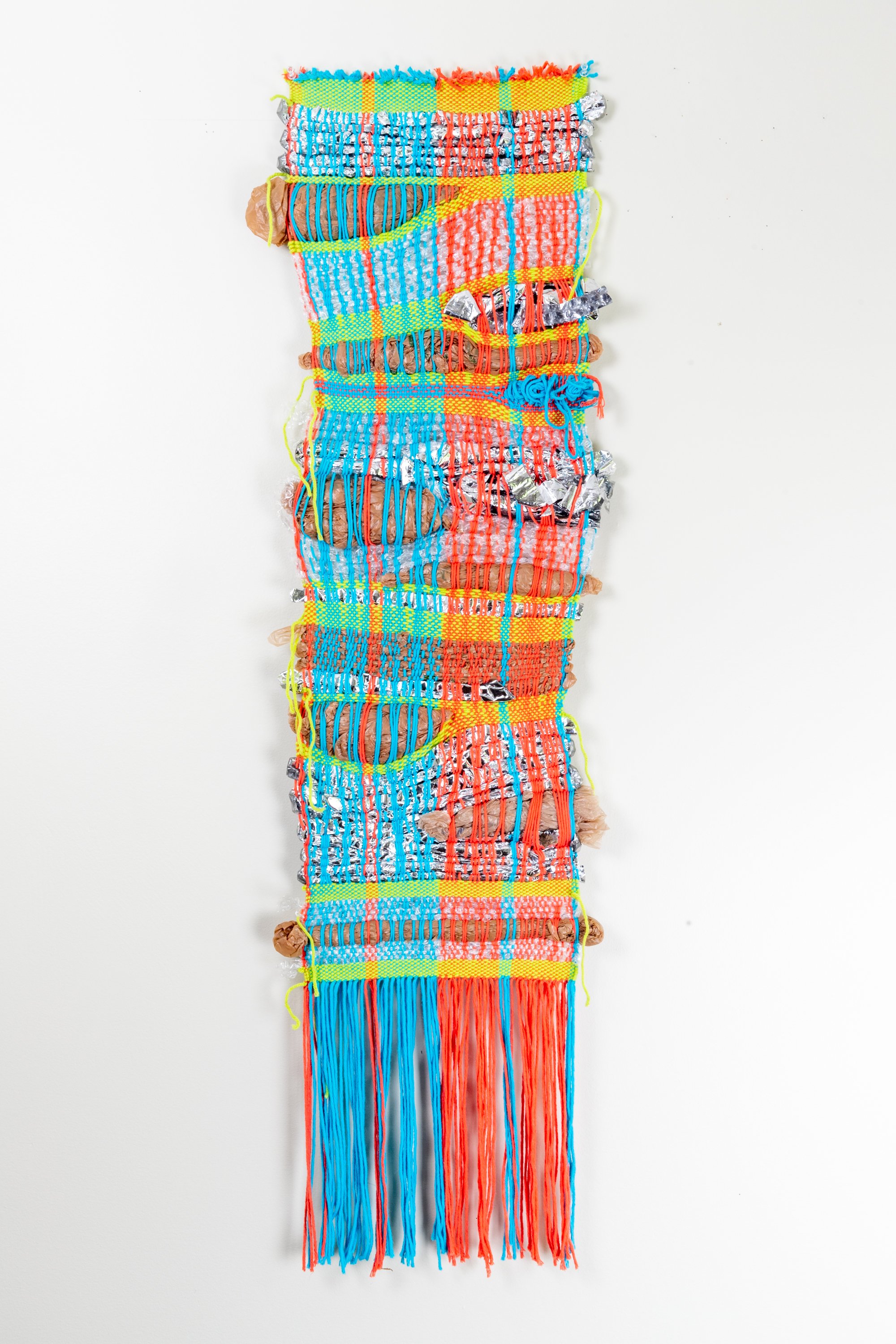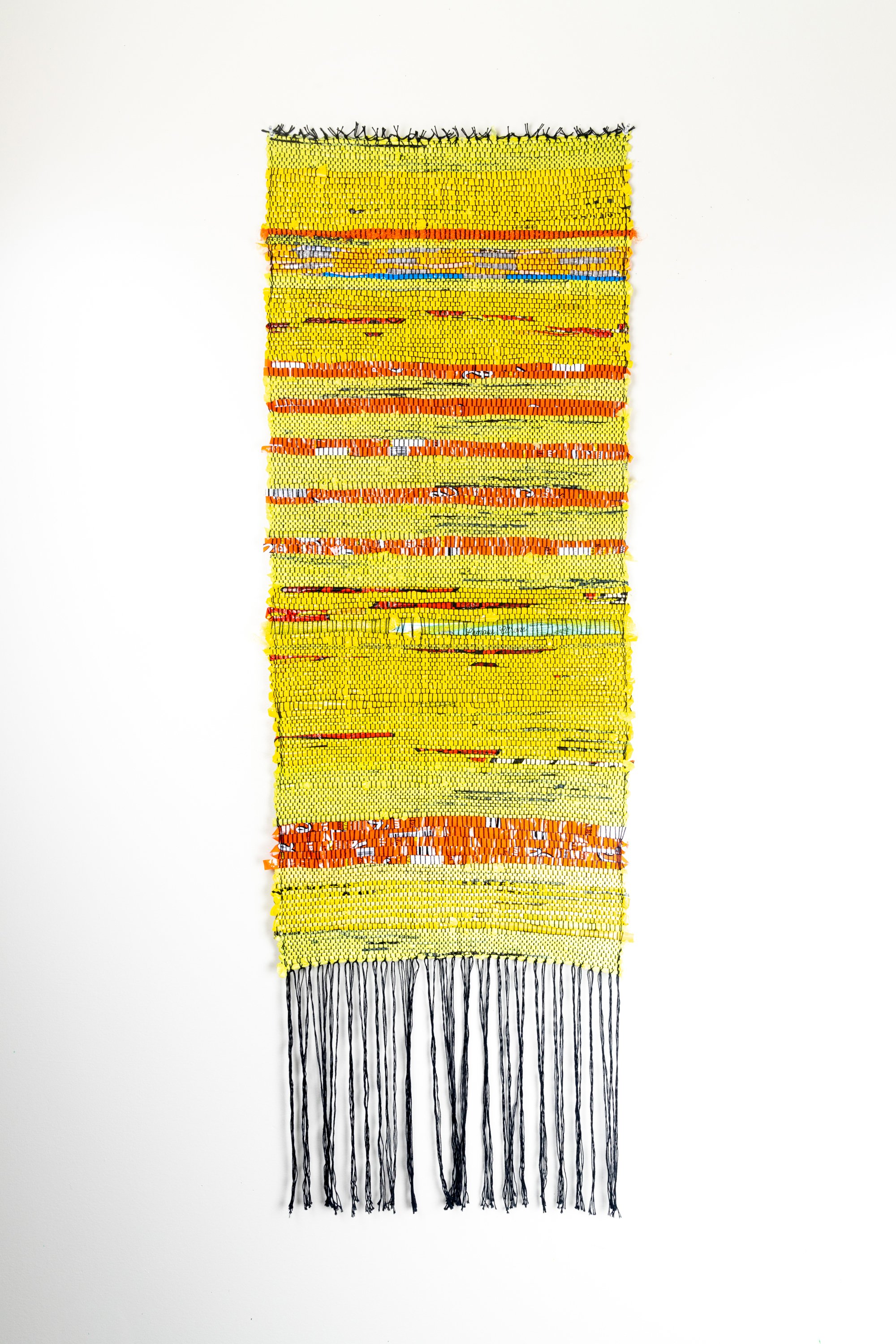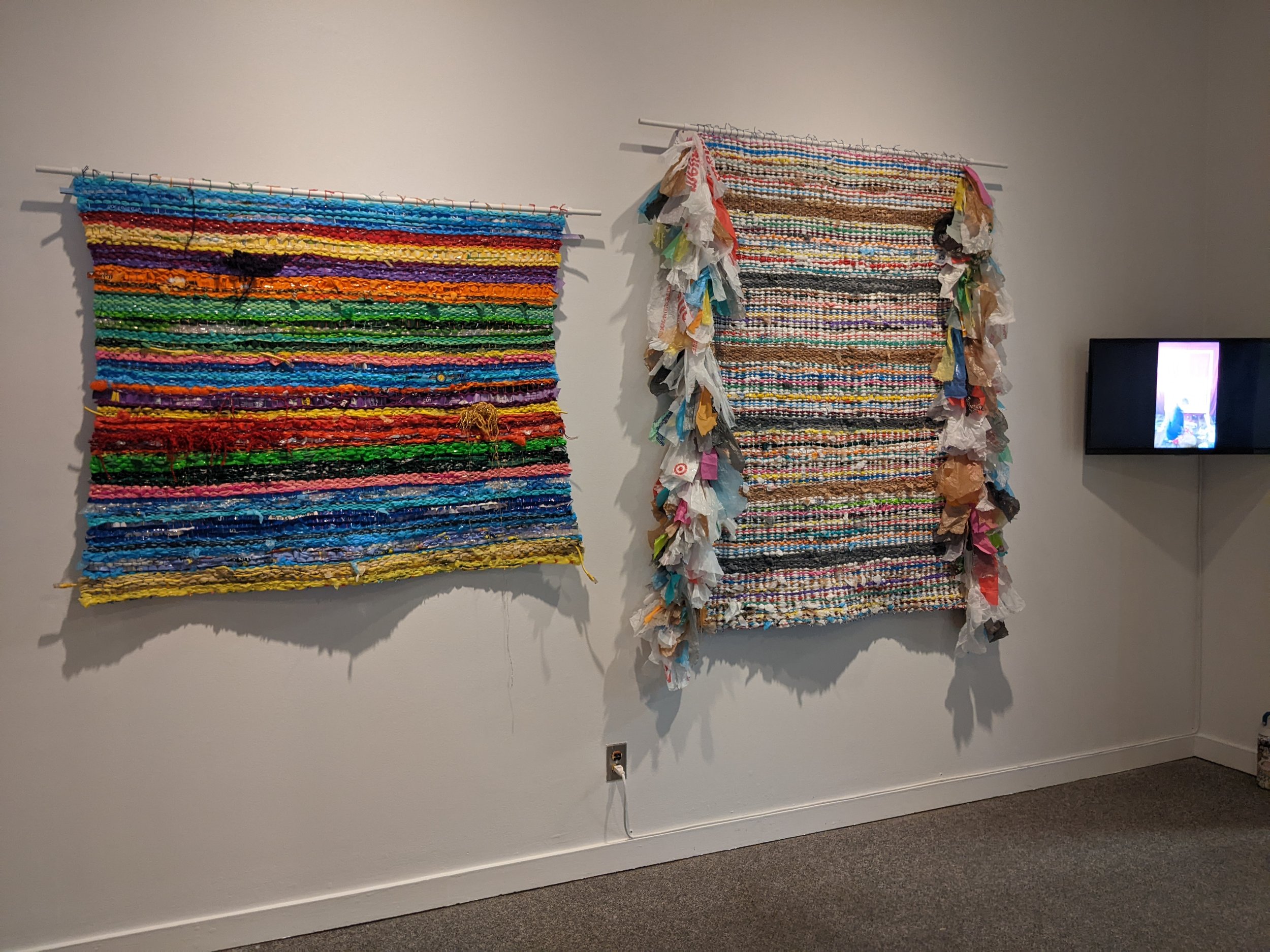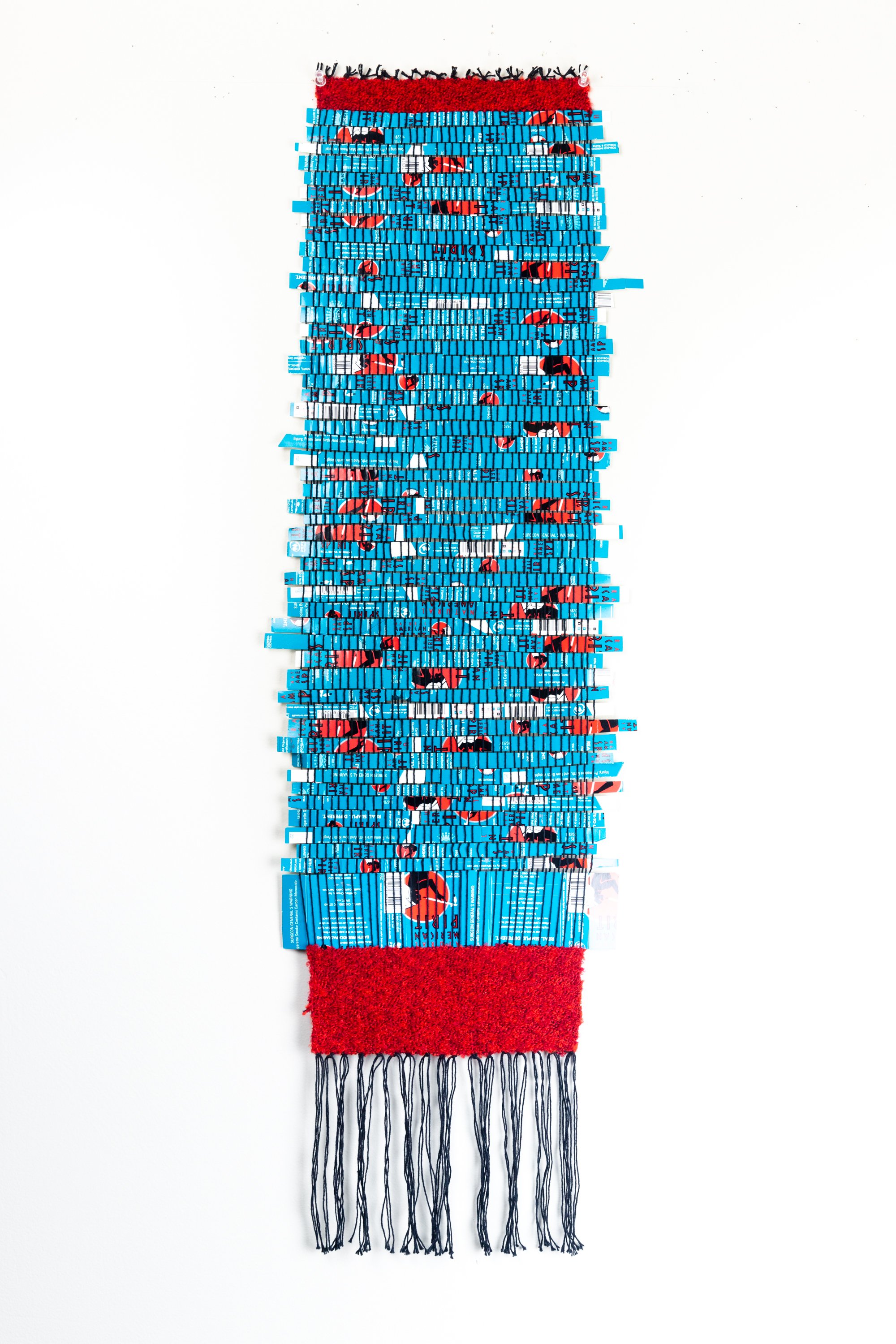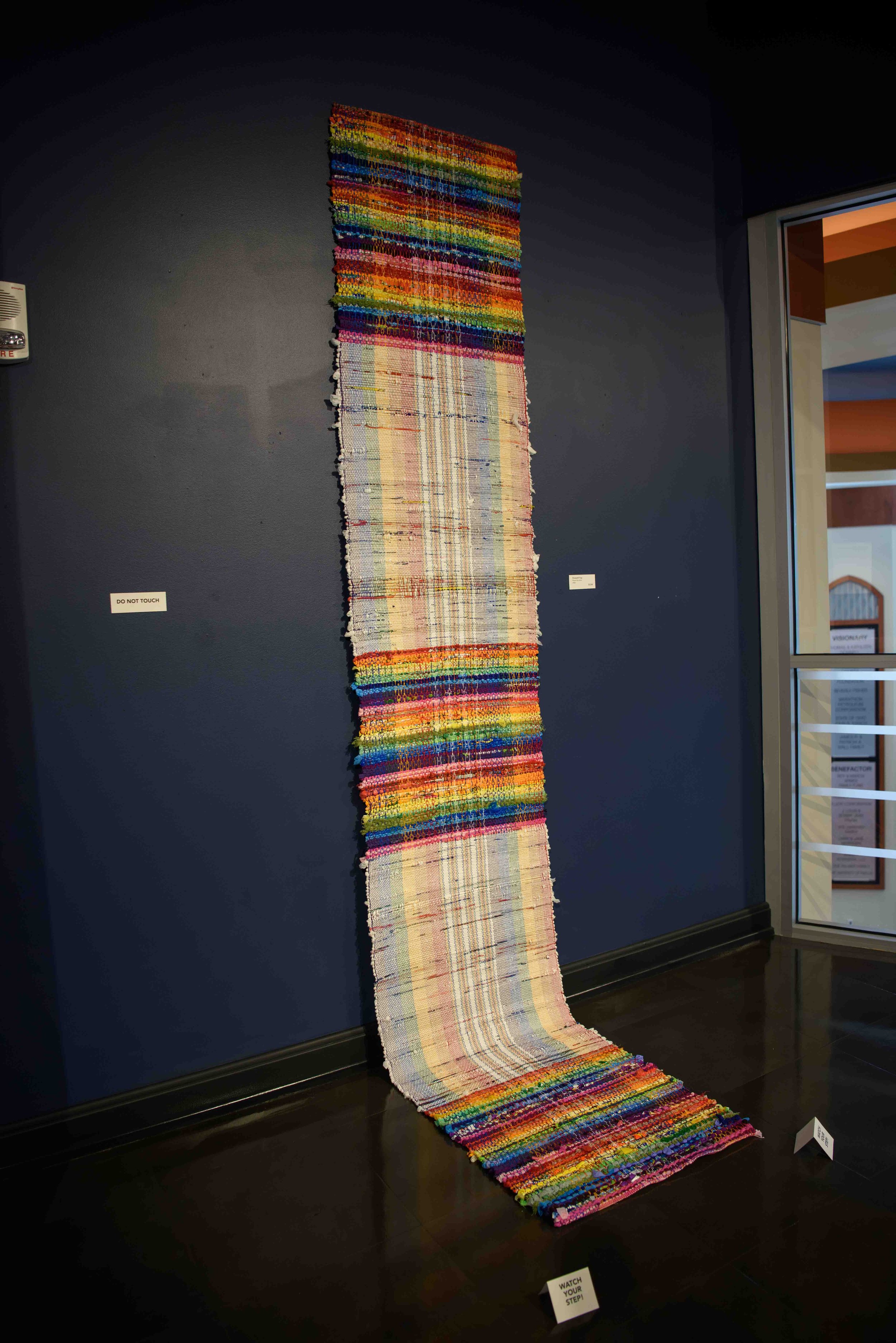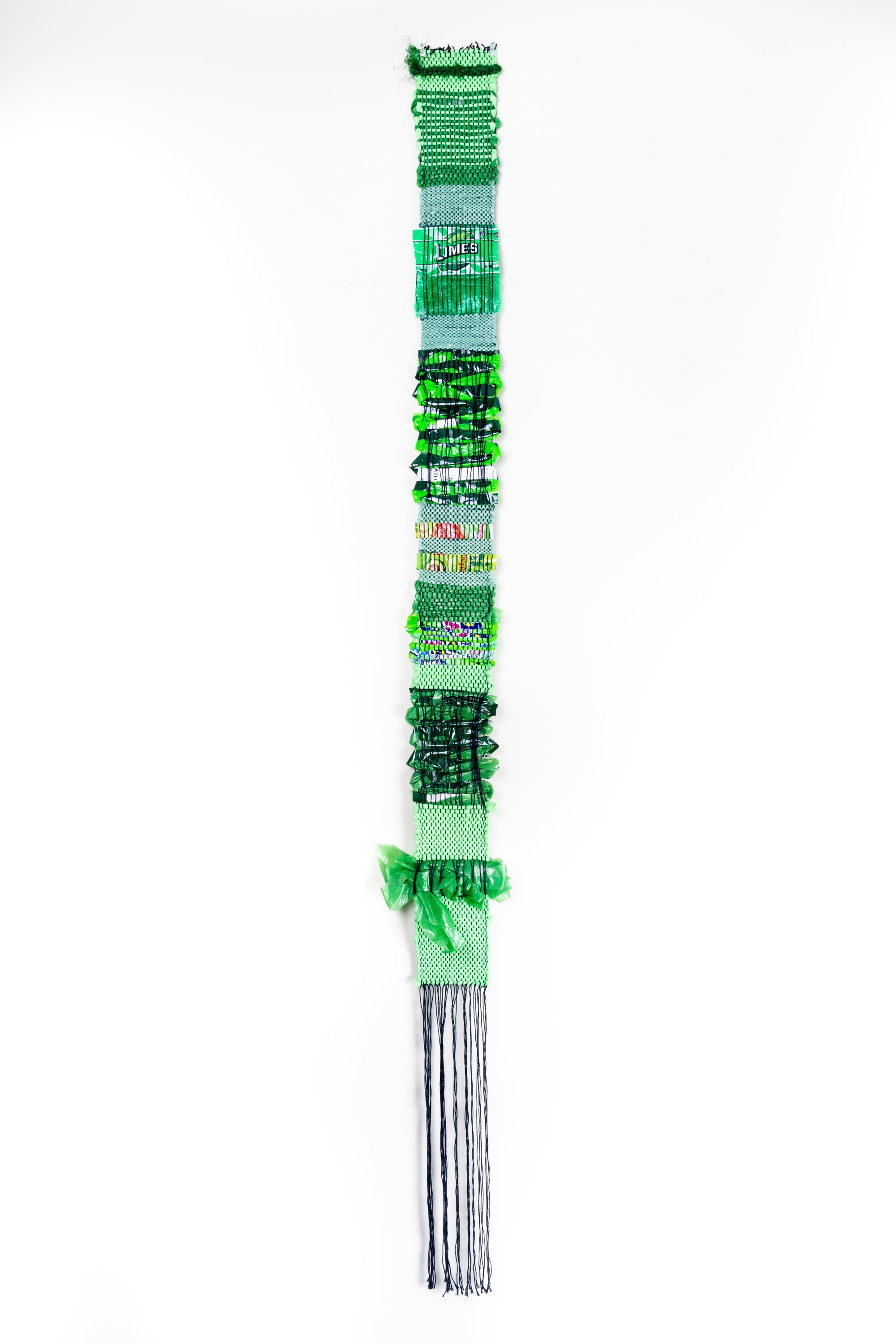trash
weavings
media: weavings made from plastic bags, produce bags, grocery bags, shopping bags, food and product wrappers, cables, fabric scraps, clothing, balloons, life preservers, animal feed bags, fertilizer bags, housewares, masks and gloves, cotton warp
solo exhibit locations:
warin lab contemporary, bangkok, thailand
evanston art center, evanston, illinois
marathon center for the performing arts, findlay, ohio
langley arts council, british columbia, canada
east lubbock art house, east lubbock, texas
chenango arts council, norwich, new york
group exhibit locations:
msu museum, michigan state university, east lansing, michigan
artprize, grand rapids, michigan
floyd center for the arts, floyd, virginia
chenango arts council, norwich, new york
huron valley council of arts, huron, michigan
e.e. ford house, grosse pointe shores, michigan
the green exchange, chicago, illinois
woman made gallery, chicago, illinois
jones house cultural center, boone, north carolina
year: 2019-ongoing
I am intrigued by the ephemerality of art media in relation to the environment, and the relationships between people and the planet we live on. What human creations [art and otherwise] will remain in 1,000 years? In 10,000 years? In 1,000,000 years? What will stay and what will decay?
Plastic is everywhere we look, and is going nowhere, fast. Globalized capitalism encourages human production/consumption and subsequent waste practices that threaten the environments we live in. We are particularly drawn to the convenience and price of plastic materials, which we use and dispose of at an alarming rate: landfills are constantly filling to capacity, and a lack of a comprehensive recycling plan means many of our discarded goods inhabit our waterways, green spaces, and sacred earth.
The pieces in this series are at the nexus of aesthetics, anthropological inquiry of environmental ruin at human hands, and hope for socio-environmental justice. These weavings are made of a yarn warp, with plastic bags acting as the weft. Each of the weavings incorporates a range of discarded and re-collected plastics, including grocery, produce, and trash bags, food and other product wrappers, and shipping materials. If you look closely, you can find labels from Amazon to Ziploc, and which work to identify many of the corporate culprits who produce endless amounts of plastic. The process of weaving abandoned mediums into a narrative of human/product/environment relations points to the complex web of ecology we live in, destroy, and seek to protect.

